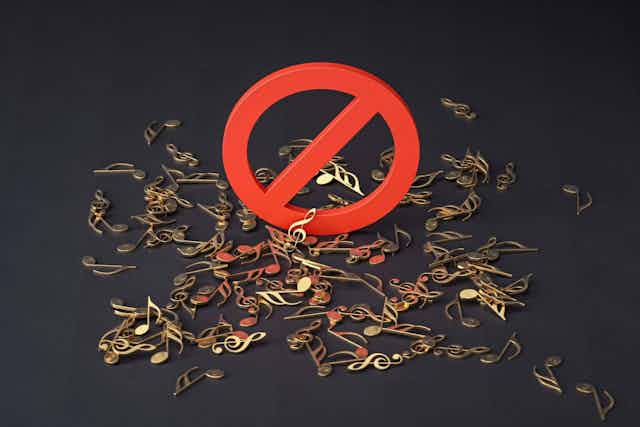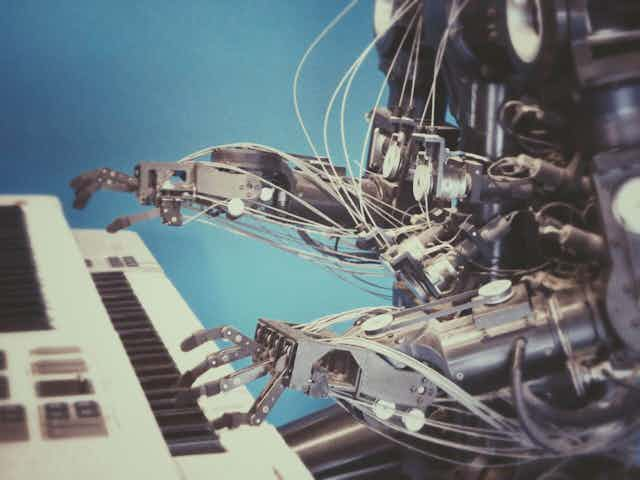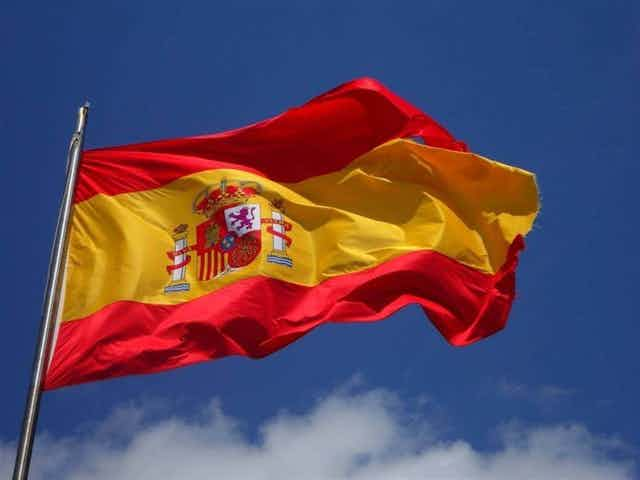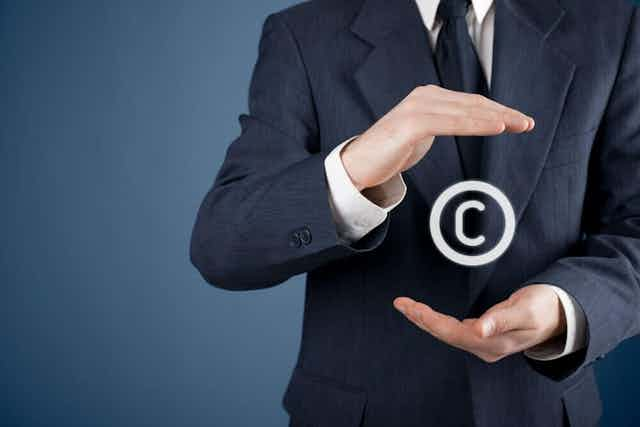How many seconds can I use copyrighted music?


Holding a degree in Business Administration and Programming, Pablo established Legis Music in 2016. With a focus on the royalty-free music industry, he has contributed extensively to the field, authoring over 150 articles on various aspects of music licensing. His efforts have been instrumental in developing one of the most straightforward and liberal music licensing frameworks available today.
Key points
- There is no “30-second law” for using copyrighted music without authorization. * Fair use allows you to use copyrighted songs for circumstances such as criticism, education, parody or journalistic reporting. * Using copyrighted music without proper permissions can cause serious consequences to your reputation and business, such as the removal of content or even the closure of your channel. * Some alternatives to using copyrighted music are: public domain music, royalty-free music platforms, original music composition or licensing.
 If you are a content creator, or are looking for music for your audiovisual projects, you will probably want to use famous songs; which amounts to copyrighted music.
If you are a content creator, or are looking for music for your audiovisual projects, you will probably want to use famous songs; which amounts to copyrighted music.
The use of this type of music without proper licensing or authorization is prohibited and can have a significant impact on your work.
But is it possible to use this music for just a few seconds?
Fair use of copyrighted music
The (false) 30-second rule
Although there is no universally accepted “30-second rule” in copyright law, in some cases the use of short excerpts of music has been held to fall within the concept of fair use.
Fair use (or fair use in some countries) allows the use of copyrighted material under certain circumstances, such as criticism, education, parody or journalistic reporting.
 The amount of music that can be used without infringing copyright varies by context and legal jurisdiction, and there is no magic number, such as 30 seconds, that guarantees compliance with this rule.
The amount of music that can be used without infringing copyright varies by context and legal jurisdiction, and there is no magic number, such as 30 seconds, that guarantees compliance with this rule.
There are 4 factors that convert the use of copyrighted music into fair use.
These are:
- The purpose and character of the use, including whether the use is commercial in nature or is for non-profit educational purposes. Courts often focus on whether the use is “transformative,” that is, whether it adds new expression or meaning to the original or merely copies it. * The nature of the protected work. If material from works based primarily on actual events is used, the use is more likely to be considered fair use than if purely fictional works are used. * The amount and relevance of the excerpt used in relation to the entire copyrighted work. It is more likely to be considered fair use if small fragments of material from an original work are used than long fragments. However, in some cases, it may be considered illegitimate to use even a small fragment if it is an essential part of the work. * The effect of such use on the value or potential market for the copyrighted work. If the use affects the copyright owner’s ability to monetize its original work by serving as a substitute for demand for that work, the use is less likely to be considered legitimate.
Use for educational and critical purposes
A common way in which the use of copyrighted music is permitted is for educational and critical purposes.
For example, a teacher who uses a brief portion of a song to illustrate a musical concept in a class probably does not infringe copyright.
 Similarly, a music critic may use excerpts from a song to support a legitimate critique.
Similarly, a music critic may use excerpts from a song to support a legitimate critique.
However, it is important to remember that fair use does not guarantee automatic clearance for any use of copyrighted music.
You must ensure that your use falls within the legally recognized categories and does not unfairly harm copyright owners.
Risks of using copyrighted music without authorization
Using copyrighted music without proper authorization or without complying with relevant regulations can lead to a number of significant repercussions for your content.
Online platforms such as YouTube, Instagram and Tik Tok, use automated systems to detect content with copyrighted music.
When copyrighted music is identified in your content, the platform may take action, such as:
- Blocking or removal of content. If, for example, you have uploaded a video to YouTube with copyrighted music, you may receive a notification or “strike” for non-compliance with the rules. If you reach YouTube’s “three strikes”, your content will be blocked for life. * Monetization by the rights holder: Instead of removing your content, the copyright holder may choose to monetize it in their favor, which means you will not be able to make money from that content. * Warnings or restrictions on your account: Repeated copyright infringements on online platforms may result in warnings, restrictions or even removal of your account.
Now, you know the consequences of taking a risk and using a small piece of copyrighted music under fair use law. However, keep in mind that it is not always justifiable.
However, if you prefer not to face these repercussions, here are some other options for using music in your projects.
Alternatives to the use of copyrighted music
Public domain music
Public domain music is music whose copyrights have expired and is therefore free of restrictions on use.
You can use these works without obtaining permissions or paying royalties.
However, please note that copyright laws vary from country to country and not all musical works are in the public domain .
Some musical works have been intentionally released into the public domain by their creators.
Royalty-free music platforms
There are numerous websites that offer royalty-free music, also known as royalty-free music.
This music can be licensed for a one-time fee or subscription.
The music tracks in these libraries are often organized by genre, mood and purpose, making it easy to find the right music for your project.
We recommend you take a look at our licenses , we have three different plans, so you can choose the one that best suits your needs:
- Starter Plan. This license is recommended for those who are looking for music to use in personal projects. It also allows you to use the music in all social networks and on any web page. The only condition is to credit legismusic.com in every publication. * Personal Plan. If you are looking to get numerous songs to use in your personal projects, this is the license for you. The Personal Plan offers unlimited music downloads, which can be used in social networks and streaming platforms, YouTube, apps, video games and audio books; as well as podcasts, virtual classes and online ads. Its price is 49€ in a single payment and for life -if you use it for 3 years, it will be like paying 1€/month-. * Business Plan. This plan is specially designed for freelancers, companies and those who work for clients. It is the most open license of all, as any use case is covered and it also offers unlimited music (the only thing that is not allowed is to resell the songs). Its price is a one-time payment of 99€ for life -if you use it for 2 years, it will be like paying 4€/month.
As you can see, if there is one thing that makes our licenses stand out, it is the opportunity to enjoy them forever and paying only once.
 Another of the most popular platforms is Epidemic Sound. They have a wide catalog of royalty-free music and sound effects; in addition to offering tools to avoid any type of claim.
Another of the most popular platforms is Epidemic Sound. They have a wide catalog of royalty-free music and sound effects; in addition to offering tools to avoid any type of claim.
Original music composition
An ideal option for those who want custom and exclusive music is the composition of original music.
You can collaborate with composers or musicians to create music specifically designed for your project.
This gives you complete control over the music and ensures that there are no legal concerns related to copyright.
Music licensing
If you have a specific song in mind that is copyrighted and you wish to use it in your project, you can explore obtaining a sync license.
 This involves negotiating an agreement with the copyright holder or a licensing agency that allows you to use the music under certain conditions.
This involves negotiating an agreement with the copyright holder or a licensing agency that allows you to use the music under certain conditions.
Note that this can be costly and time-consuming, but it gives you a legal avenue to use copyrighted music.
How to obtain permission to use copyrighted music?
Identify the copyright holder
- Composer or lyricist: First, identify the composer or lyricist of the song, as they are usually the copyright holder of the musical composition.
- Record label: If you are interested in a particular recording by a famous artist, it is possible that the record label is the copyright holder of the recording.
Contact the copyright holder
Once you identify the copyright holder, you can contact them for permission.
Here are some tips for doing so:
- Look up contact information: Research online to find the contact information for the copyright holder or their legal representative.
- Send a formal request: You should send a written request that explains how and why you want to use the song. Be sure to be clear about the scope of your project and how you plan to use the music.
- Negotiate terms and fees: If the copyright holder is willing to grant permission, you will likely need to negotiate terms and fees. This may include a one-time payment or royalties for continued use.
Obtain a synchronization license
If you plan to use music in audiovisual media, such as videos, movies or commercials, you can explore the option of obtaining a sync license.
This type of license allows you to synchronize music with visual images and is common in the entertainment industry.
Respect the terms of the license
Once you obtain permission to use the music, be sure to respect the terms of the license.
 This may include giving proper credit to the copyright holder, paying the agreed-upon fees, and using the music only in the manner specified in the agreement.
This may include giving proper credit to the copyright holder, paying the agreed-upon fees, and using the music only in the manner specified in the agreement.
Conclusions
In this article, we have explored whether one can indeed use small pieces of copyrighted music without authorization.
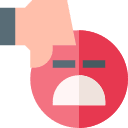 As we saw, you can’t; except for the support of the ”fair use law”, which justifies its use in cases such as educational and critical use.
As we saw, you can’t; except for the support of the ”fair use law”, which justifies its use in cases such as educational and critical use.
As long as you follow the fair use guidelines and comply with the relevant regulations, it is possible to use snippets of copyrighted music without infringing rights.
However, using copyrighted music without permission carries risks, such as copyright infringement claims, blocking or removal of content on networks, and even account termination.
This can affect your visibility and monetization.
However, if you want to avoid the risks associated with using copyrighted music without permission, there are alternatives such as public domain music, royalty-free music libraries and original music composition.
These options allow you to use music legally and ethically.
When you cannot avoid using copyrighted music, you can obtain licenses, either by contacting copyright holders directly, using music licensing platforms or acquiring sync licenses.
In this case, it is important to give proper credit, avoid unauthorized use, and share copyright knowledge with other creators.
 Respect for copyright is essential to maintaining an ethical and legal creative community.
Respect for copyright is essential to maintaining an ethical and legal creative community.
In short, using copyrighted music in your projects requires a thorough understanding of copyright and an ethical attitude.
By following legal and ethical guidelines, you will be able to enjoy copyrighted music responsibly and legally, avoiding legal problems and protecting your creativity.
References
- Copyrights . OMPI.
- Public Domain.
- Fair use. Google Help.
Why you can trust Legis Music
-
We offer comprehensive and expertly information about music licensing since 2016.
-
The website regularly updates its content to reflect the latest changes in music law, ensuring accurate information.
-
Our dedication to clarity and accuracy in explaining music rights and licensing issues builds trust among musicians, producers, and clients.
Get a Lifetime Music License
Never worry again about copyrights or claims. Unlimited downloads and social media channels. Use the music wherever you want!
Get a License